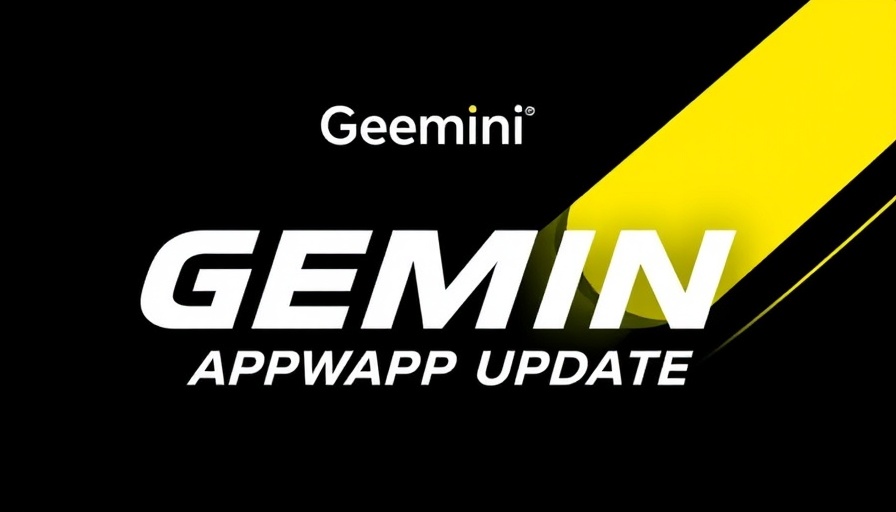
AI: The New Frontier in Go-To-Market Strategies
As the realm of digital marketing evolves, the traditional go-to-market (GTM) model is experiencing a major paradigm shift. Historically, marketing leaders centered campaigns around product launches—intensive projects culminating in a singular event. However, in today's fast-paced environment, characterized by ever-changing customer preferences and advanced technologies, this one-off approach is fundamentally flawed. It has become clear that in the age of AI, businesses should adopt a model of continuous engagement that emphasizes an ongoing dialogue with their audience.
Redefining the GTM Engine: Moving from Launches to Loops
The conventional GTM strategy focused on executing a well-defined plan is now giving way to a continuous value loop, where businesses constantly refine their offerings based on real-time market data. AI plays a pivotal role in this transformation by allowing marketers to sift through vast amounts of data efficiently, identifying customer behavior patterns and needs that static surveys often miss. This shift transforms the GTM into a dynamic conversation rather than a static announcement, creating a fluid relationship with customers that drives better ROI.
Building Ideal Client Avatars: The Core of Personalized Marketing
One of the cornerstones of an AI-driven GTM strategy is the creation of detailed Ideal Client Avatars (ICAs). Unlike generalized personas, ICAs are highly specific, pinpointing key pain points and perspectives that each decision-maker holds during the buying journey. This precision allows for targeted marketing communication that resonates deeply with various segments of the larger audience. Furthermore, AI enables the extraction of nuanced insights from diverse data sources, ensuring marketing teams do not just know who their audience is, but also what they want.
Omni-channel Messaging: Integrating AI Across Touchpoints
Today's marketing landscape demands a sophisticated omni-channel approach. Companies must utilize established channels alongside emerging technologies while ensuring that their messaging remains coherent across all platforms. With AI's ability to analyze customer interactions across touchpoints, businesses can deliver personalized experiences whatever the channel—be it social media, email, or chatbots. This level of personalization not only retains customer attention but also builds lasting brand loyalty.
Turning Insight Into Action: The Need for Integration and Automation
AI empowers marketers to leverage data effectively, turning insights into actionable strategies. For instance, predictive analytics can illuminate trends that may influence future buying behaviors. Coupled with automation that handles routine tasks—like lead nurturing and email campaigns—teams can redirect their focus to high-impact activities. Many successful GTM strategies now hinge upon utilizing AI tools like Analytics and CRM platforms that integrate AI functionalities, enabling seamless tracking of customer interactions and satisfaction.
Fostering Collaboration Among GTM Teams
With technological advancement, alignment across marketing, sales, and customer service departments is paramount. As per recent data, over half of GTM teams prioritize strengthening cross-departmental communication and collaboration to enhance efficiency and performance. When teams work cohesively, sharing insights and resources, they can better leverage AI capabilities to reach common goals, thereby improving their ROI.
Conclusion: Embrace Change or Be Left Behind
The integration of AI into go-to-market strategies is not just an upgrade; it's a necessity for survival in the digital economy. Leveraging AI’s capabilities not only enhances operational efficiency but also paves the way for unparalleled personalization in customer engagement. To remain competitive, businesses must reconsider their GTM playbooks, transitioning from one-off launches to a fluid loop of continuous improvement and engagement. The future is here—are you ready to embrace it?
 Add Row
Add Row  Add
Add 




Write A Comment